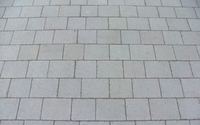Property North Wales
- Home
- Add Listing
- Architects
- Builders and Tradesmen
- Conveyancing
- Estate Agents & Letting
- Financial & mortgage Advisors
- General
- HIPS and EPC
- Home Improvement
- Other Financial Services
- Property Overseas
- Quick Rapid House Sale Deals
- Surveyors & Valuers
- Roofing tips
- Links
- Blog
Quick Search
 Concrete blocks are an essential and economic building material which has a number of construction applications. These blocks are made from cast concrete, i.e. Cement and aggregate, sand or fine gravel for high density blocks. Lower density blacks can be made with industrial waste as an aggregate. Lightweight blocks can be produced using aerated concrete. Monaprecast Concrete Blocks Manufacturers are experts in precast concrete including the construction of paving products, mega blocks and concrete building blocks. They only use the best, most environmentally friendly methods in te construction of their concrete products. Concrete blocks are often a building material used in the construction of walls. It can be referred to as a Concrete Masonry Unit or CMU. The process of manufacturing a concrete block can vary but the following steps are commonly used: Mixing – Sand and gravel are stored outside in piles and are transferred into storage bins in the plant next to a conveyor belt, as they are needed. The Portland cement is stored outside in large vertically placed silos, which protect it from moisture. As the production run starts, the required amounts of sand, gravel and cement are tipped into a 'weigh batcher', this measures the correct amount of the needed material. The dry materials then flow into a stationary mixer, this blends them all together for a number of minutes. There are two kinds of mixers which are used widespread, one of these is called a planetary or 'pan' mixer resembles a shallow pan with a shut-down lid. Specifically designed mixing blades are attached to a vertical revolving shaft inside the mixer. Another kind, the horizontal drum mixer. It resembles a coffee can turned horizontally and, again has mixing blades attached to a spinning shaft. After this, a small amount of water is then added inside the machine, this water is sometimes has to be chilled or heated depending on external temperatures. Additional chemicals and pigments for colouring may also be added now. This mixture is then mixed for six to eight minutes. Once this is thoroughly mixed it is dumped into an inclined bucket conveyor, transported into an elevated hopper and conveyed onto of the block machine at a regulated rate. Inside the block machine it is forced downward into moulds. These moulds consist of an outer mold box containing several mould liners. These liners are made to determine the inner and outer shape of the block. This can produce up to 15 blocks at once. These are pressurised and compacted by the weight of the upper moldhead and supplemented by air or hydraulic pressure cylinders. These blocks re released from the molds onto a flat steel pallet. These un-cured concrete buildign blocks are pushed onto another conveyor towards an automated stacker which loads them into a curing rack. These racks pass under a rotating brush which removes loose material from the top of the blocks. This is then rolled into a kiln. This is a large enclosed room which they are held from one to three hours. This hardens them slightly. Steam is then gradually introduced to raise the temperature at a controlled rate. Racks of these cured concrete blocks are rolled out the kiln and the pallets are unstacked and placed on a chain conveyor. The batch of blocks is completed, the tray is fed back into the kiln to repeat the process. |
Archives
September 2023
August 2023
July 2023
May 2023
March 2023
November 2022
October 2022
July 2022
April 2022
March 2022
February 2022
January 2022
December 2021
November 2021
October 2021
September 2021
August 2021
June 2021
May 2021
April 2021
March 2021
January 2021
December 2020
November 2020
October 2020
September 2020
August 2020
July 2020
June 2020
May 2020
April 2020
March 2020
February 2020
January 2020
December 2019
October 2019
September 2019
June 2019
October 2018
September 2018
August 2018
July 2018
May 2018
April 2018
March 2018
October 2017
August 2017
July 2017
May 2017
March 2017
February 2017
January 2017
November 2016
October 2016
August 2016
March 2016
January 2016
October 2015
September 2015
July 2015
April 2015
March 2015
January 2015
September 2014
August 2014
July 2014
June 2014
May 2014
April 2014
March 2014
February 2014
January 2014
December 2013
November 2013
October 2013
August 2013
July 2013
May 2013
March 2013
December 2012
November 2012
July 2012
June 2012
April 2012
Partner Sites